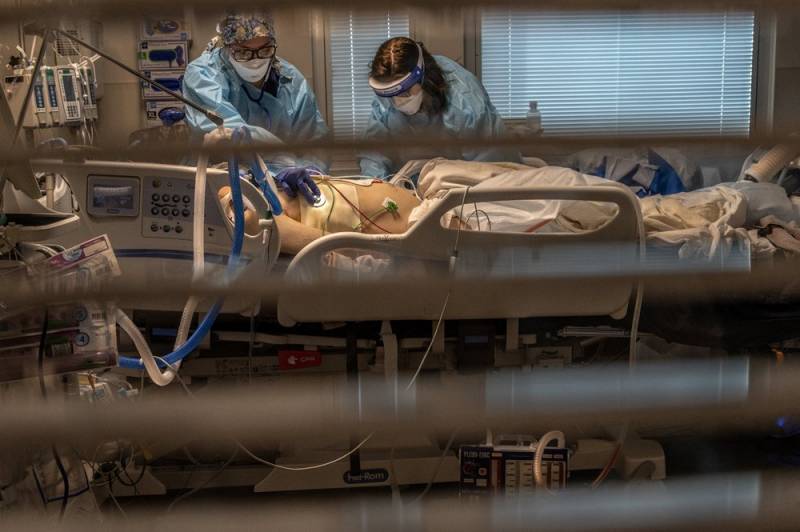“In most hospitals about half of all of the beds are filled with COVID patients and half of all the ICU beds are filled with COVID patients, and two thirds of these patients are suffocating due to the inflammation that’s in their lungs that’s caused by the virus,” said Dr. Christina Ghaly, director of the Los Angeles County Department of Health Services.
“They’re suffocating to the point that they can no longer breathe on their own, and they have to have someone put a tube down their throat, in order to oxygenate their organs. Many of these people will not live to be in 2021.”
The state has seen its number of cases climb exponentially in recent weeks, fueled largely by people who ignored warnings and held traditional Thanksgiving gatherings, health officials say.
The milestone prompted new warnings that the state’s medical system will be overwhelmed and unable to provide proper care if people ignore increasingly urgent warnings to avoid gathering for the holidays, or at least take precautions like meeting outside in masks and at a safe distance, or opening windows and turning on fans if they meet indoors.
“Two million COVID-19 cases in California is a regrettable milestone, and it means that thousands of Californians will spend this holiday season in a hospital,” said Carmela Coyle, president and CEO of the California Hospital Association. “On Christmas Eve, Californians can still make a choice to avoid unnecessary travel and gatherings on Christmas Day. We all must do what we can to slow the relentless spread of this virus.”
In a rare ray of hope, a statistical model that state officials have been using to project hospitalizations predicts more than 71,000 patients in one month’s time — still an unsustainable four times the current number of patients but roughly 40,000 fewer than the same model had been projecting just days ago.
The transmission rate — the number of people that one infected person will in turn infect — has been slowing for nearly two weeks, and it is nearing the point that would bring fewer infections from each person who contracts the virus.
In addition, the rate of positive cases reached a new high of 12.4% over a two-week period, but it was starting to trend downward over the last seven days from a peak of 13.3% to 12.6%. The seven day rate was 12.1% on Thursday.
Gov. Gavin Newsom on Wednesday called the slowing growth rates “a modest indication of a possible sign of some good news.” He credited stay-home orders for nearly the entire state that imposed an overnight curfew, shuttered many businesses and restricted most retail to 20% capacity. Restaurants may only serve takeout.
Pleas to avoid social gatherings for the Christmas and New Year’s holidays rang with special desperation in Southern California. Los Angeles County is leading the surge, accounting for one-third of the state’s COVID-19 cases and nearly 40% of deaths.

